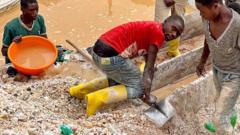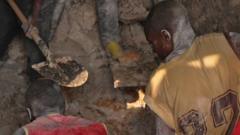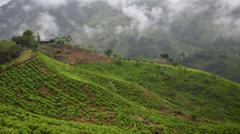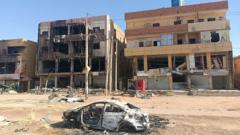At least 50 hippos and numerous other large animals have perished due to anthrax poisoning in the historic Virunga National Park of the Democratic Republic of Congo. The park's director, Emmanuel De Merode, reported that the first signs of the outbreak were observed last week, with images depicting the lifeless bodies of the animals floating in the Ishasha River. While the clear source of the anthrax contamination remains unidentified, laboratory tests have confirmed the presence of the bacterium. Efforts are currently underway to recover and properly dispose of the affected animals to mitigate any further health risks, yet logistical challenges hinder the process, including a lack of excavating equipment.
Hippo Tragedy: 50 Lives Lost to Anthrax in DR Congo National Park
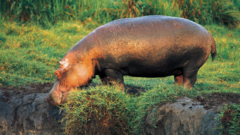
Hippo Tragedy: 50 Lives Lost to Anthrax in DR Congo National Park
A devastating outbreak raises concerns about wildlife safety and health in Virunga.
"The situation is complex due to accessibility issues," De Merode stated to Reuters. "We aim to prevent additional spread by using caustic soda during burial." The river flows into Lake Edward, also prompting reports of deceased wildlife in that area. Anthrax, caused by the bacterium Bacillus anthracis, is a serious health risk but is not easily transmissible, often laying dormant as spores in the soil for extended periods before infecting animals through wounds or inhalation.
The Congolese Institute for the Conservation of Nature has cautioned local residents to steer clear of interactions with wildlife and to ensure any water sourced locally is boiled before consumption. Covering an area of 7,800 square kilometers (approximately 3,000 square miles), Virunga is not only Africa’s oldest national park but also one of its most ecologically diverse and perilous, having been impacted by ongoing conflict between armed groups and the Congolese military over the region's abundant natural resources. Tragically, many park rangers have lost their lives while striving to safeguard wildlife amidst the turmoil.
Historically, the hippo population in Virunga has seen drastic declines due to poaching and armed conflict, dropping from over 20,000 to a mere few hundred. Efforts to bolster their numbers in recent decades have become increasingly challenging in the face of such threats and now, with this recent outbreak, concern over the future of these majestic creatures continues to grow.
The Congolese Institute for the Conservation of Nature has cautioned local residents to steer clear of interactions with wildlife and to ensure any water sourced locally is boiled before consumption. Covering an area of 7,800 square kilometers (approximately 3,000 square miles), Virunga is not only Africa’s oldest national park but also one of its most ecologically diverse and perilous, having been impacted by ongoing conflict between armed groups and the Congolese military over the region's abundant natural resources. Tragically, many park rangers have lost their lives while striving to safeguard wildlife amidst the turmoil.
Historically, the hippo population in Virunga has seen drastic declines due to poaching and armed conflict, dropping from over 20,000 to a mere few hundred. Efforts to bolster their numbers in recent decades have become increasingly challenging in the face of such threats and now, with this recent outbreak, concern over the future of these majestic creatures continues to grow.

